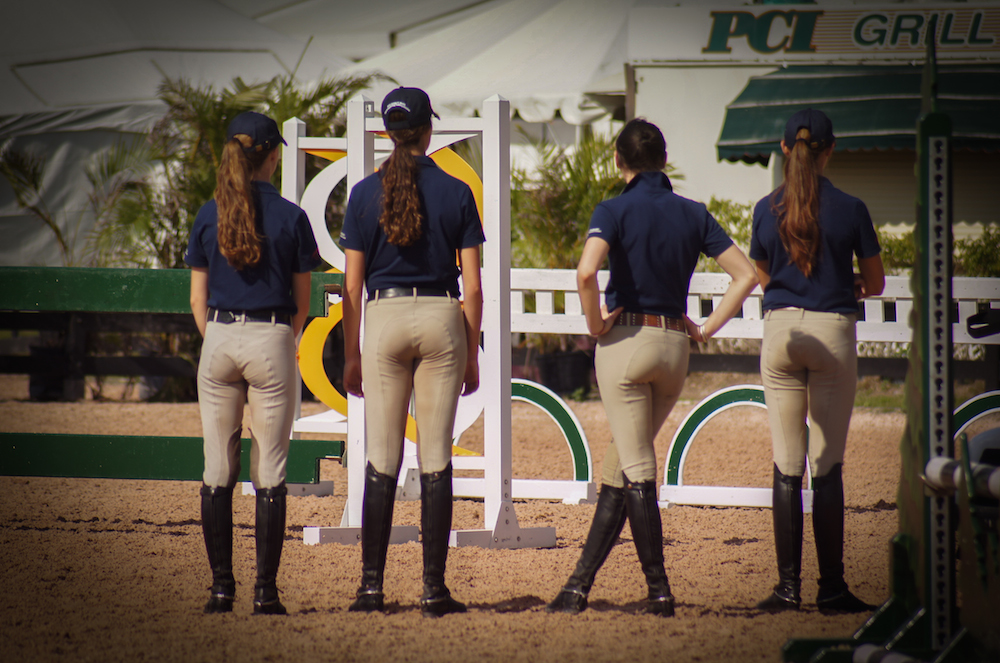This May, the United States Equestrian Federation announced a new structure for the Platinum Performance/USEF Talent Search, long known as a proving ground for top young riders in the USA.
The Talent Search serves as a showcase for their show jumping skills, but in recent years, a big problem began to emerge: too many riders were arriving at the Talent Search Final unprepared. To remedy this, a revised mission statement and class specifications were created to better prepare riders for the finals, by improving the structure of Talent Search classes. The new rules identify the role of the competition in the rider pipeline and state that, ” the Talent Search should be a test of the rider’s ability to ride a jumper type course effectively while maintaining the classic American forward style of riding. The Talent Search program fosters this tradition in U.S. Show Jumping and builds on preparing the next generation of International jumping riders.” It starts with the premise that it is important for riders to have equitation basics and a solid jumping seat position in order to become an effective jumper rider.
The new program, effective September 1, 2014 creates three tiers for Talent Search classes, which increase in difficulty. See the revised specifications here.
I caught up with Missy Clark and asked for her thoughts on the new structure. Clark is not only on the USEF Equitation committee, she is a dedicated trainer and proven coach of countless winning equitation and show jumping riders. Read on:
Horse & Style: Does the new structure remedy the problem of underprepared riders?
Missy Clark: I don’t see that the changes were made to remedy a “problem,” but instead to redesign the existing class. I am a member of the task force that was put together to review the Talent Search and our motivation is not to fix anything, but rather to head it in a new direction. One that is geared more towards the idea of good equitation riders riding in a jumper format, rather than a traditional 3’6″ equitation setting. I was the one who pitched renaming or re-categorizing it as “Jumping Seat Equitation” as a way of inspiring those that are judging to look at it in a different way.
Our goal is to create a secondary step, because there aren’t that many steps between equitation and real Junior Jumper riding. This will allow kids to come up through the pipeline and continue along the way, and hopefully represent the US Equestrian Team or go on to be successful in the jumper ring.
H&S: Is equitation important in creating top US show jumpers who can compete internationally, and why?
MC: Yes, one hundred percent! If you look at the history of the U.S., and the best show jumpers in the sport, they’ve all done it. From Conrad Homfeld to McLain Ward, Peter Wylde, and Beezie Madden. It goes on and on. It’s been a great mainstay of U.S. show jumping. Equally amazing is that the U.S. style of riding has been embraced worldwide. There was a day when the Germans rode very German and the Dutch rode very Dutch; but now you watch the best 5* shows and they ride very American. That has to do with the influence of the U.S. equitation division on the world, and you cannot dispute it! My blood boils when people say that equitation has no value!
Anything pursued for the wrong reasons can go off course. The only reason I teach equitation, every day of my life (and I love doing it), is to teach the rider correct riding and proper form- which enables them to do whatever they want to do. The equitation gives them the tools to do it. It’s not “we’ve got to win the medal finals or the USET finals;” winning those events are merely a byproduct of correct riding and proper horsemanship.
H&S: How do you foresee the changes in the Talent Search playing out?
MC: I foresee it as being the right step at the right time. Like anything, change is difficult. It may be more difficult for some than others in the transitional phase, but at the end of day it’s where it should head. To me it’s geared towards proper jumper riding. The horse doesn’t need to be in the stamp of being completely quiet and cantering around showing no emotion. I don’t know where or how equitation got sidetracked. For me, when I watch a great round and the horse bucks a little or plays a little at the end and they get a score of 60 or 50, I always say to myself, “was that a rider error?” And the answer is “no.” The horse was acting like a horse and showing that he feels great and that’s a good thing. Part of good horsemanship is being able to manage that. It’s a good thing for your horse to show some expression, not go in a robotic manner. Hopefully this change will get people to focus on what jumping and jumping seat equitation is all about: the rider’s ability and what he’s doing on the horse.


Leave A Comment
You must be logged in to post a comment.